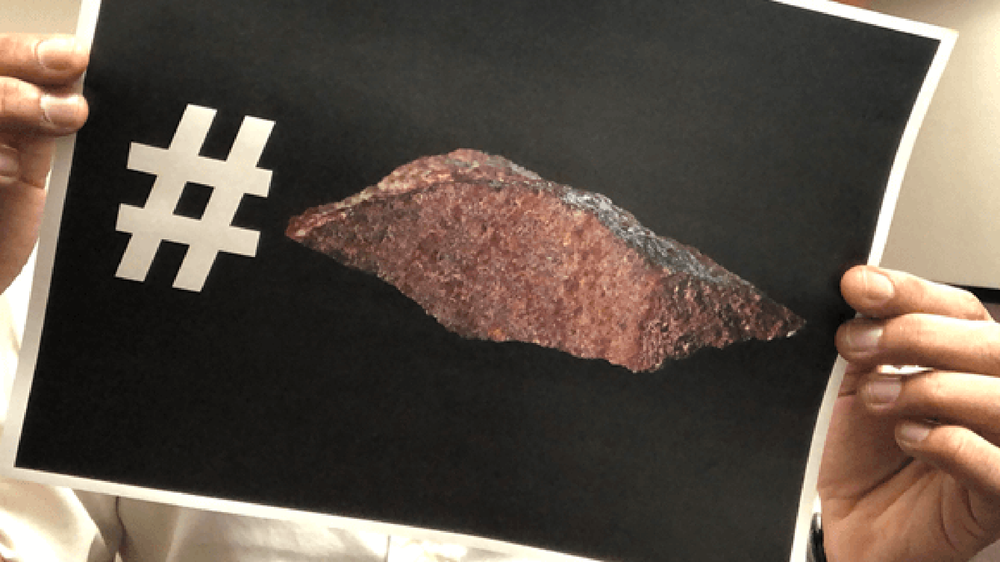Somethings never change. Humans have always been social creatures, relied on the environment for daily needs, engaged in the arts, and used hashtags! No, really, humans do all of these things and have throughout time. Humanity, as we know it, has been using the hashtag on social media for about 11 years now, but how long has the symbol really been used? A recent study answered today’s big question: Who used the first hashtag?
The symbol we call a hashtag has been a part of our lives for way longer than 11 years, of course. Sure, currently it’s known as a hashtag, but it’s also been the “pound” symbol on phones and has represented the number sign for quite some time. However, now those four lines have intersected, which has put them in the news for something dating back to ancient times! First of all, this hashtag shape has a name, an octothorpe!

Image credit: Prabir Mehta
At a recent dig in the Blombos Cave in South Africa, scientists stumbled upon what is now being called the oldest known human painting. This big discovery was not an entire wall or a series of big rocks, but instead it was a small wedge of sandstone. This small piece was flattened and the surface smoothed to act as the canvas for this ancient artist. Then using ochre shaved down to a narrow point, like a crayon, this artist left for the ages what to us looks like a hashtag. Scientists are dating this discovery to about 73,000 years ago pushing back our artistic archives by nearly 30,000 years!
Prior to this discovery, most scientists had pinned the earliest human painting efforts to cave paintings in Europe and Indonesia dating back to about 40,000 years. At 73,000 years old, this now becomes the oldest human painting on record. Older hominid designs in the form of etchings date back nearly 300,000 years but etchings can withstand the impacts of wear and tear throughout time better than paint can. This painted octothorpe is now the oldest example of art created by a transferable medium.
More questions remain however. What did this artist mean? Why this symbol? This particular octothorpe design could have been put on the sandstone to show possession or represent ownership somehow. Perhaps it held superstitious or spiritual meanings, maybe it was trying to play ancient tic-tac-toe, or maybe they just found it to be pleasing. We don’t have any way of knowing based on the little information we have here, but this piece certainly does tell us one thing for sure: humans love art.
This discovery further cements humanity’s relationship to art and sheds a little light into understanding when we started to really leave permanent markings in the natural world around us. Humanity’s art very well could be the first thing that we did to leave permanent changes to an environment.
Since then we’ve come a long way and are now even living in a time period named after our ability to impact the world around us. That’s right, we’re now living in the Anthropocene epoch. Did this ancient art piece begin humanity’s trajectory to interacting with and influencing our surroundings? Are there older examples? There’s so much work left to be done here.
Regardless, this does show that we have apparently had art on our mind for quite some time now and of course, for the science community, this particular hashtag is definitely a trending topic.


